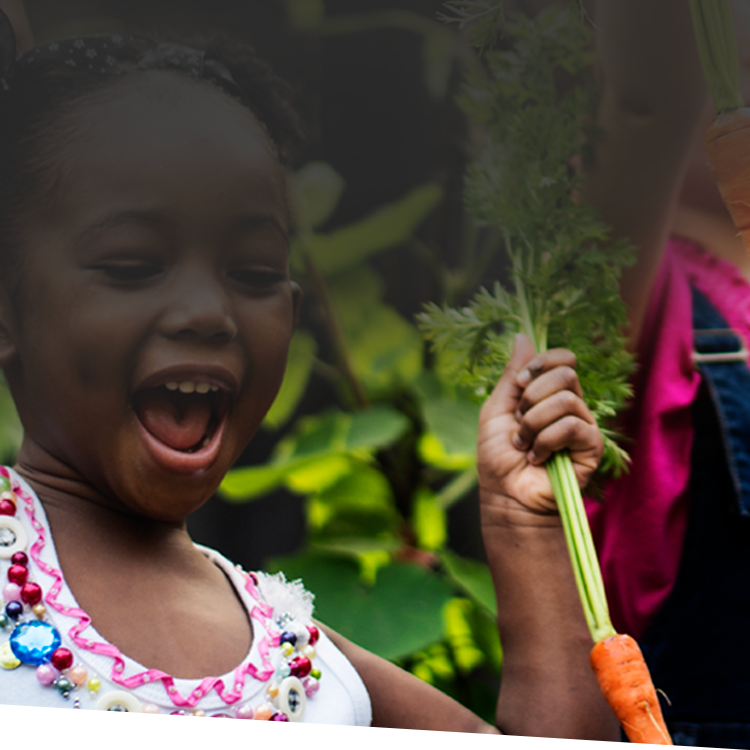As the old saying goes, spring is in the air. Bursting new buds are coating everything with a thin dusting of pollen, nesting birds are singing songs of joy, and critters are emerging after a long season dormant. It’s a time for rejuvenation and new growth; a time for us to stretch our winter bodies and head outdoors for some fresh air and sunshine.
There is a lot to learn from nature—far more than what can be shown on computer screens or talked about in lectures. For schools with established garden programs, your green-thumb students understand the educational benefits of community gardening and have probably been twitching to turn over the beds and get early spring crops and seeds planted. Just as likely, your teachers have also felt the surge of spring fever, and have begun folding some of their curriculum into the energy stemming from your outdoor space.
According to the U.S. Department of Agriculture (2006), 83% of students say that having an opportunity to connect with natural ecosystem complexities profoundly enriches their educational experiences. However, most schools gravitated away from agricultural and farming lessons in the 1950s, when technology started to become a focus.
Culturally, our world was changing and that was reflected not only within our schools, but also within our neighborhoods and lifestyles. Our landscapes were reshaped by expanding cities and urban sprawl, reducing areas where children could explore nature.
Today, televisions, mobile devices, and video games have replaced environmental exploration for many young people. Even in our recreated natural spaces and school gardens, elements of the wild and the opportunity to get dirty are limited by safety protocols, the need for play area supervision, and standards of neatness.
Yet, there is much to be learned from “getting lost in nature.” In a report written by Dorothy Blair, an assistant professor at Penn State University, she writes, “gardens adhering to the principles of biodiversity and organic pest management—containing ponds or recycling streams, trees, and butterfly attractors—would be havens for a wide variety of flora and fauna beyond the crops, flowers, and bushes purposely grown and would demonstrate ecosystem complexity.”
“Gardens that children help plan allow 'close' personal experiences with the Earth, repeated sensory contract, and interaction with a particular intimately known space, creating confidence in the processes of nature that some researchers believe is necessary for healthy human development.''
The same report shares a belief that today’s children lack exposure to the natural world. They are losing out on opportunities to shape environmental values and put science in context.
Several studies mentioned throughout Blair’s report illustrate that children who gardened were more likely to be active in nature as adults. These students are also more likely to grow up appreciating natural and earth sciences, acting as environmental stewards.
Researchers in Denmark determined that children who had more time in nature grew up to be happier adults. The study couldn’t conclude if it was a result of being around trees and vegetation, from more exercise, or from lessons nature taught in patience or self-reliance. However, it was clear that green spaces had a positive impact on mental health.
The positive aspects of gardening programs expand beyond elevated social skills, interpersonal relations, and self-confidence. In the seven comparison studies cited in Blair’s report, all students involved with gardening programs scored higher than those who were not in science. The comparison studies also found that gardening programs provided increased math and science opportunities, as students were expected to measure space; observe and experiment with natural and plant processes; learn about soil improvements; recycle and creatively reuse materials; and propagate, germinate, and save seeds.
Schools that incorporate garden lessons into classroom curriculum can create an even more impactful learning experience. Math lessons can be tied into tasks of measuring plot space, art lessons can be partnered with recycling incentives, and even language lessons can be connected with observations and experiments. School gardens have much more to teach us than the basics of agriculture—but even the basics themselves are powerful.
Additional ISM resources:
The Source for Private School News Vol. 13 No. 5 Four Things You Didn’t Know About School Gardens
Additional ISM resources for members:
I&P Vol. 28 No. 3 Planning School Grounds for Outdoor Learning
I&P Vol. 32 No. 7 When Urban Sprawl Threatens Your Country Day School





